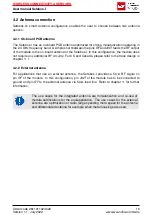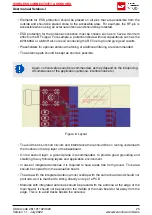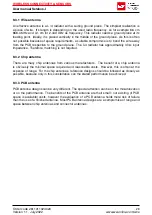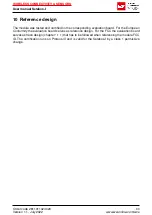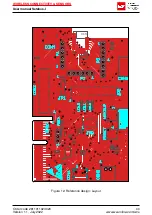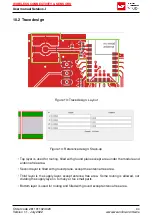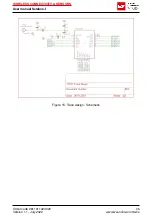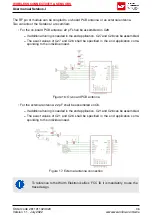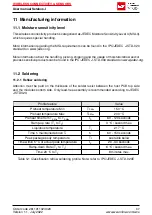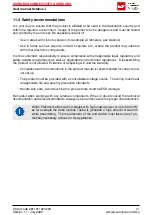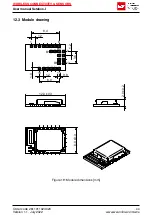
WIRELESS CONNECTIVITY & SENSORS
User manual Setebos-I
9.3.1 Wire antenna
An effective antenna is a
λ
/4 radiator with a suiting ground plane. The simplest realization is
a piece of wire. It’s length is depending on the used radio frequency, so for example 8.6 cm
868.0 MHz and 3.1 cm for 2.440 GHz as frequency. This radiator needs a ground plane at its
feeding point. Ideally, it is placed vertically in the middle of the ground plane. As this is often
not possible because of space requirements, a suitable compromise is to bend the wire away
from the PCB respective to the ground plane. The
λ
/4 radiator has approximately 40
Ω
input
impedance. Therefore, matching is not required.
9.3.2 Chip antenna
There are many chip antennas from various manufacturers. The benefit of a chip antenna
is obviously the minimal space required and reasonable costs. However, this is often at the
expense of range. For the chip antennas, reference designs should be followed as closely as
possible, because only in this constellation can the stated performance be achieved.
9.3.3 PCB antenna
PCB antenna designs can be very different. The special attention can be on the miniaturization
or on the performance. The benefits of the PCB antenna are their small / not existing (if PCB
space is available) costs, however the evaluation of a PCB antenna holds more risk of failure
than the use of a finished antenna. Most PCB antenna designs are a compromise of range and
space between chip antennas and connector antennas.
Order code 2611011024020
28
Version 1.1 , July 2022






